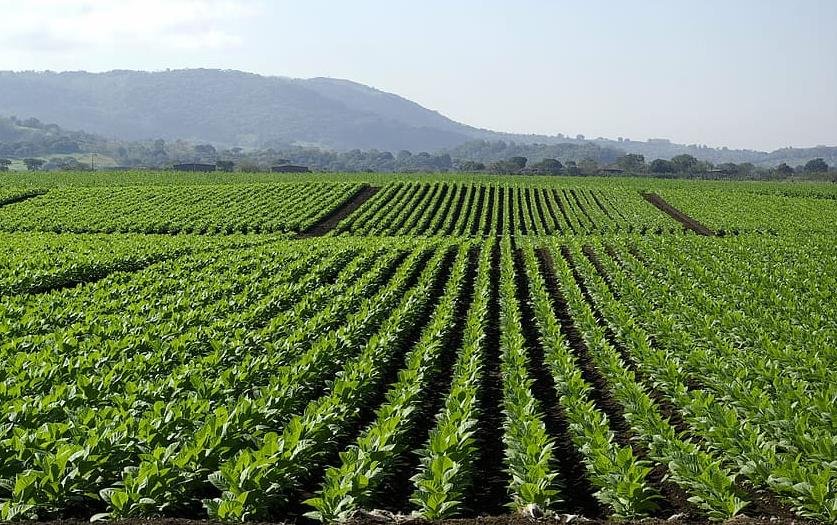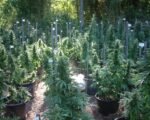Scientists have successfully recreated a rare and powerful anticancer drug from a rare and endangered tree in tobacco plants, using genetic engineering. The drug, called paclitaxel, is derived from the bark of the yew tree, which is native to Asia, Europe, and North America. The drug is used to treat various forms of cancer, such as breast, ovarian, lung, and pancreatic cancer. However, the drug is also very scarce and expensive, as it requires thousands of yew trees to be cut down to produce one kilogram of paclitaxel. The scientists have found a way to transfer the biosynthetic pathway of paclitaxel from the yew tree to the tobacco plant, which can grow faster and easier, and produce more paclitaxel. The scientists hope that this breakthrough will help conserve the yew tree and make the anticancer drug more accessible and affordable.
The yew tree belongs to the genus Taxus, which comprises about 10 species of evergreen conifers. The yew tree has a distinctive appearance, with dark green needles, red berries, and reddish-brown bark. The yew tree has a long history of human use, dating back to ancient times. It was valued for its wood, which was used to make bows, spears, and furniture. It was also revered for its spiritual and symbolic significance, as it was associated with death, rebirth, and immortality in various cultures.

However, the most remarkable feature of the yew tree is its ability to produce a rare and powerful anticancer compound called paclitaxel. Paclitaxel was first discovered in 1962 by researchers from the National Cancer Institute, who isolated it from the bark of the Pacific yew tree (Taxus brevifolia). Paclitaxel is an antimitotic agent, which means that it prevents cancer cells from dividing and multiplying. It is used to treat various forms of cancer, such as breast, ovarian, lung, and pancreatic cancer.
Paclitaxel is one of the most effective and widely used anticancer drugs in the world. However, it is also one of the most difficult and expensive to obtain. Paclitaxel is present in very low concentrations in the yew tree, making up only about 0.004% of the bark. To produce one kilogram of paclitaxel, about 10,000 kilograms of bark are needed. This means that thousands of yew trees have to be cut down to meet the demand for the drug. This has led to the rapid decline and endangerment of the yew tree, especially in China, where it is classified as a first-level rare and protected species.
The hope of the tobacco plant
To solve the problem of paclitaxel scarcity and yew tree conservation, Chinese scientists have been searching for alternative and sustainable ways to produce the anticancer compound. One of the most promising methods is to use genetic engineering to transfer the biosynthetic pathway of paclitaxel from the yew tree to another plant that can grow faster and easier. In 2024, two Chinese professors, Yan Jianbin and Lei Xiaoguang, published a groundbreaking study in the journal Science, where they reported that they had successfully created a biosynthetic pathway for paclitaxel in tobacco plants.
Tobacco plants are widely cultivated and consumed for their nicotine content, which is addictive and harmful to health. However, tobacco plants also have some advantages, such as their high biomass, fast growth, and easy transformation. The scientists used a technique called Agrobacterium-mediated transformation, which involves using a soil bacterium called Agrobacterium tumefaciens to insert foreign genes into the plant cells. The scientists inserted 15 genes from the yew tree and two genes from other plants into the tobacco plant, which enabled the tobacco plant to produce paclitaxel.
The scientists tested the tobacco plants and found that they could produce paclitaxel at a concentration of 0.01% of the dry weight, which is 2.5 times higher than the yew tree. The scientists also found that the tobacco plants could produce other related compounds, such as taxol, which is a precursor of paclitaxel, and baccatin III, which is an intermediate of paclitaxel. The scientists estimated that one hectare of tobacco plants could produce about 20 kilograms of paclitaxel, which is equivalent to 200 hectares of yew trees.
The potential of the breakthrough
The scientists have hailed their breakthrough as a milestone in the field of plant biotechnology and anticancer drug production. They have said that their breakthrough will help conserve the yew tree and make the anticancer drug more accessible and affordable. They have also said that their breakthrough will open up new possibilities for the synthesis of other valuable compounds from plants, such as alkaloids, terpenoids, and flavonoids.
The scientists have also acknowledged the challenges and limitations of their breakthrough, such as the safety and regulation of genetically modified plants, the extraction and purification of paclitaxel from tobacco plants, and the optimization and scaling up of the production process. The scientists have said that they will continue to improve and refine their method, and collaborate with other researchers and industry partners to bring their breakthrough to the market and the clinic.
Maria Garcia is an award-winning author who excels in creating engaging cannabis-centric articles that captivate audiences. Her versatile writing style allows her to cover a wide range of topics within the cannabis space, from advocacy and social justice to product reviews and lifestyle features. Maria’s dedication to promoting education and awareness about cannabis shines through in her thoughtfully curated content that resonates with both seasoned enthusiasts and newcomers alike.








